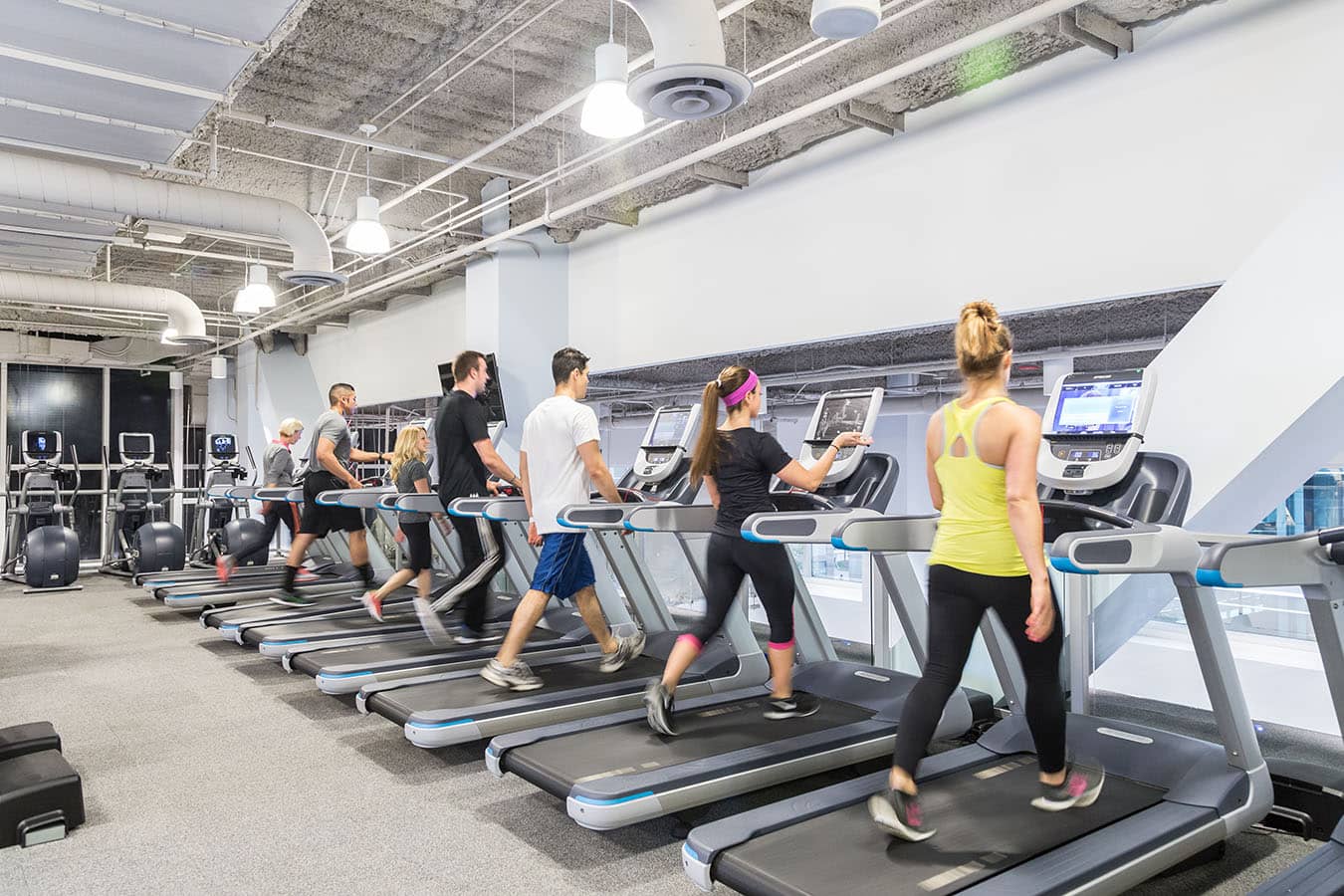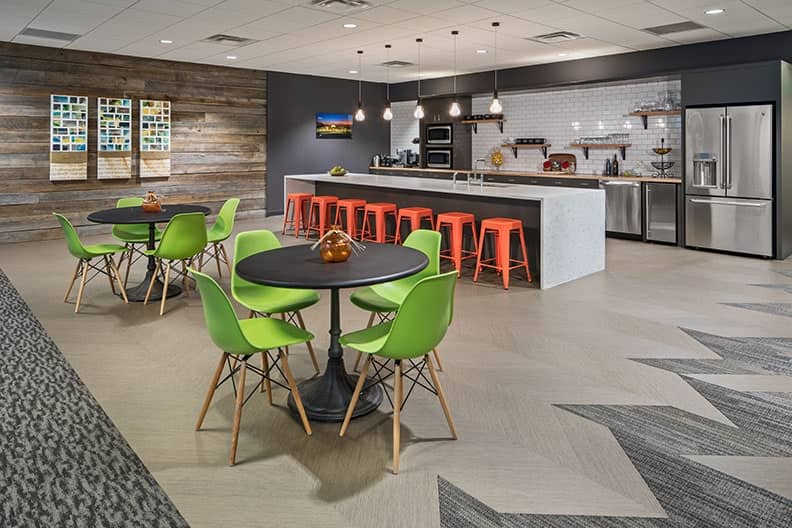More than one million jobs have been added since the election, bringing the unemployment rate to 4.3%–a 16-year low. These strong employment figures have expedited the shift in the “war for talent”, characterized by intense competition for top and highly-skilled professionals. In fact, according to a US News article, 40% of employers claim they are struggling to find qualified candidates. This presents companies with a unique opportunity to revamp how they recruit, onboard, and retain employees by leveraging the physical office space. Here is a look-see at what companies are doing:
Employee Experience
Today’s modern employee looks at their job as more than just a paycheck. For many, it’s a lifestyle choice. Companies are taking into account employee needs beyond the job description, with amenities and programs that enrich their lives. Offices with fitness and wellness offerings, self-service options, and social opportunities are on top of the list. Buildings located in live-work-play hubs are equally in high-demand. Employees are willing to take a pay cut if the experience matches their needs, which means if a company wants to attract and retain the best talent, they need to look at the employee experience.

Empowerment
How offices are designed significantly impacts retention. Workspace with open layouts and private offices and meeting rooms give employees optionality in how they want to work. This sense of empowerment enhances employee satisfaction.

Corporate Culture
Majority of today’s workforce is comprised of Millennials who are characterized by the need for transparency, work-life balance and flexibility, connectivity, and experience. Not surprising that companies with diverse and engaging corporate cultures are in most demand. Offices with interactive collaboration areas that can serve as team building venues can add great value to a company’s corporate culture.

Blended Workforce
Technology advancements have given way to a blended workforce of full-time permanent employees, freelancers, and telecommuters working alongside one another. Looking ahead, experts predict on-demand positions to make up at least 40% of the workforce in coming years. Many of today’s modern offices are designed in include flexible work stations and desks, and high-tech conferencing systems to accommodate the blended workforce. Some companies even go as far as leasing out unused-desks to other professionals who may need a temporary work area.

Socially Responsible
Millennials are more environmentally savvy and socially responsible than their predecessors. And it is not surprising that this group seeks out companies that align with their values. Certifications like LEED are no longer enough. Today’s offices are designed with natural materials, natural light, and the latest technology efficiencies to minimize the carbon footprint.

Fun Aesthetics
Bringing pops of color and comfortable furniture into the office can go a long way. It gives a sense that the company is progressive and hip, and an overall fun place to work, which can have tremendous buy-in power from employees. Think Google. Lounge areas with couches encourage relaxation and creativity.




